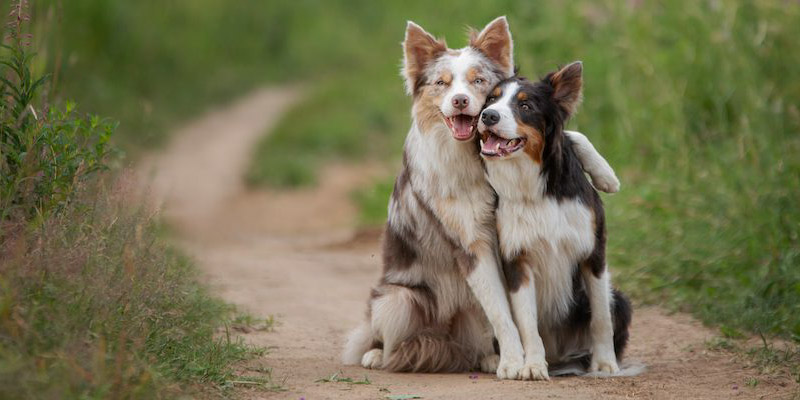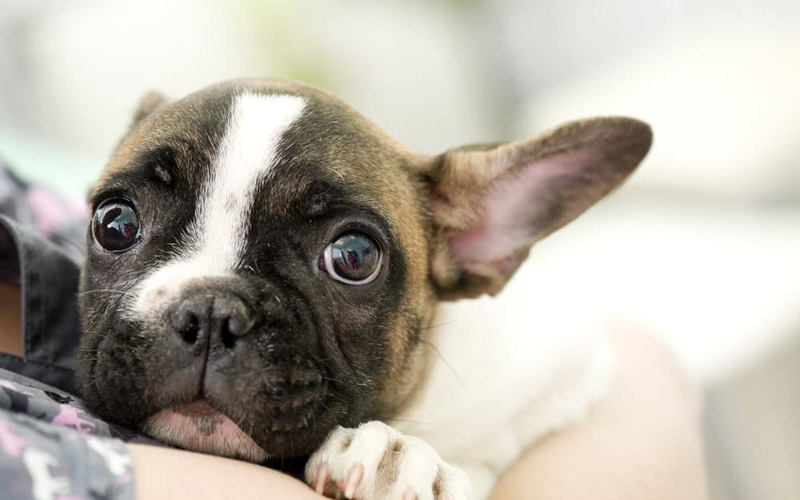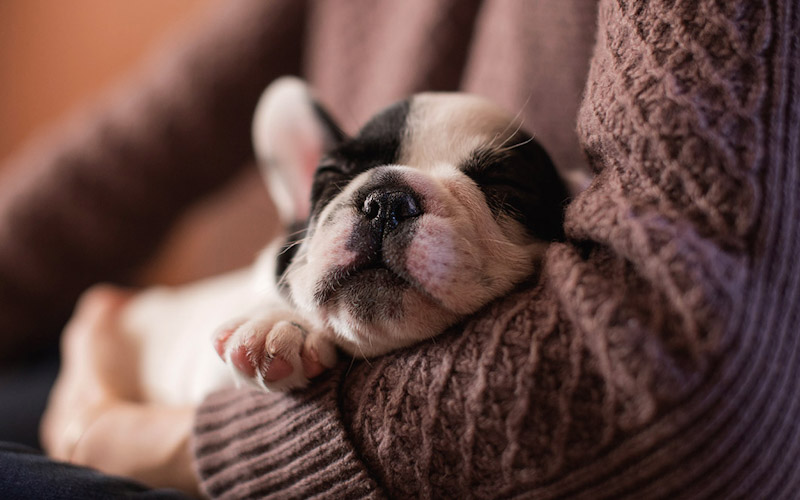As dog owners, we often express our love and affection through physical gestures, much like we do with other humans. Hugging, a natural expression of warmth and care for us, might seem like a perfect way to show our dogs how much we love them. However, despite our best intentions, dogs may not always interpret this gesture in the way we expect. Understanding whether dogs actually enjoy being hugged—or if it causes them stress—is crucial for building a strong, trusting relationship with our canine companions.

While some dogs may tolerate or even appreciate a hug from their favorite human, many others could find it uncomfortable or even threatening. Dogs communicate primarily through body language, and a hug, which restricts their movement, might not align with their natural communication style. In this article, we’ll explore how dogs perceive hugging, what signs to look for that indicate discomfort, and alternative ways to show affection that respect your dog’s comfort level. By learning more about how dogs experience physical touch, you can ensure that your expressions of love are received as positively as they’re intended.
1. Understanding Canine Body Language and Communication
How Dogs Communicate Discomfort
Dogs are highly expressive animals, relying heavily on body language to convey their emotions. Unlike humans, who often use words to express discomfort, dogs use subtle physical cues to communicate when they are uneasy or stressed. Recognizing these signs is essential for understanding your dog’s feelings, especially during close physical interactions like hugging.Common indicators of discomfort include yawning, which, outside of sleepiness, can be a sign of anxiety. Similarly, lip-licking or nose-licking, when not related to eating, often indicates that a dog is feeling uneasy. Another telltale sign is when a dog turns its head away from you, avoiding direct eye contact—a clear message that they would prefer some distance. Additionally, if you notice the whites of your dog’s eyes, often referred to as “whale eye,” this is a strong indication that your dog is feeling stressed or threatened.
Why Hugs Can Be Misinterpreted
While hugging is a natural way for humans to show affection, dogs may perceive this gesture very differently. For a dog, a hug can feel restrictive, as it limits their ability to move freely. This sensation of being physically confined can trigger feelings of being trapped or threatened, especially if the dog is not accustomed to such close contact.
The difference in communication styles between humans and dogs further complicates this interaction. While humans might see a hug as comforting, dogs do not naturally engage in this kind of physical closeness. In the canine world, close physical contact can sometimes be associated with dominance or aggression rather than affection. Therefore, even if your intentions are loving, your dog might not naturally understand the meaning behind a hug, leading to confusion or discomfort. Recognizing and respecting these differences is key to ensuring that your dog feels safe and secure in your presence.
2. Scientific Insights: Do Dogs Enjoy Hugs?
Research and Studies on Hugging Dogs
Research into canine behavior has provided valuable insights into how dogs perceive hugging. Several studies have explored dogs’ reactions to being hugged, and the findings suggest that many dogs experience increased stress rather than comfort from this gesture. For instance, a well-known study conducted by Dr. Stanley Coren, a psychologist and canine behavior expert, analyzed photographs of dogs being hugged and found that a significant number of them displayed signs of discomfort or anxiety, such as turning their heads away, showing the whites of their eyes, or having tense bodies.
Veterinarians and animal behaviorists often caution against hugging dogs, particularly those you are not familiar with. Dr. Coren and others in the field advise that, while some dogs may tolerate hugs, this is not a universal trait, and many dogs may perceive it as a form of restraint rather than affection. Therefore, it’s essential to observe your dog’s individual response to hugging and prioritize their comfort and well-being.

The Role of Breed and Individual Personality
A dog’s reaction to being hugged can vary widely based on breed, temperament, and personal history. Certain breeds, particularly those bred for close companionship, might be more tolerant of physical affection, including hugging. For example, breeds like the Golden Retriever or Labrador Retriever are often more accepting of hugs due to their friendly and affectionate nature. On the other hand, breeds that are more independent or protective, such as the Shiba Inu or the Chow Chow, might be less comfortable with this type of close contact.
Individual personality also plays a crucial role. A dog that has been socialized to accept various forms of physical touch from an early age might be more receptive to hugging, while a dog with a history of trauma or negative experiences with restraint might react with fear or anxiety. For example, a rescue dog that has previously been mistreated may see hugging as a threatening gesture, even if done with the best intentions. Understanding your dog’s unique personality and background is key to ensuring that your methods of showing affection are truly appreciated.
3. Recognizing Your Dog’s Comfort Level
How to Tell if Your Dog Likes or Dislikes Hugs
Understanding your dog’s comfort level with hugs begins with observing their body language. Here’s a checklist of cues to help you determine whether your dog is enjoying the embrace or feeling stressed:
- Relaxed Body: If your dog’s body remains loose and relaxed during a hug, it’s a good sign they’re comfortable.
Tail Position: A wagging tail that is low and relaxed can indicate contentment, whereas a stiff, high tail or a tucked tail suggests discomfort.
Facial Expressions: Look for soft, relaxed facial features. Signs of stress include a furrowed brow, lip licking, yawning, or a tense mouth.
Eyes: If your dog’s eyes are soft and their gaze is steady, they are likely comfortable. “Whale eye,” where the whites of the eyes are visible, is a clear indicator of stress.
Movement: A dog that leans into the hug or stays still might be comfortable, but if they pull away, stiffen, or try to escape, they’re likely not enjoying the hug.
It’s also important to consider the context. A dog that might normally tolerate a hug could react differently if they’re tired, in an unfamiliar environment, or hugged by someone they’re not close to.
Respecting Your Dog’s Boundaries
Even if your dog seems to tolerate hugs, it’s essential to respect their boundaries. Dogs may accept a hug out of trust or loyalty, but that doesn’t necessarily mean they enjoy it. Pushing a dog’s comfort limits can lead to stress, anxiety, or even aggression over time.
To ensure your dog remains comfortable, observe their reactions carefully and be willing to adjust your behavior accordingly. If you wish to gradually accustom your dog to closer physical contact, start by offering gentle petting and praise. Slowly increase the duration and proximity of the touch, always watching for signs of discomfort. If your dog remains relaxed, you can continue, but if they show any signs of stress, give them space immediately.Remember, showing affection in ways that align with your dog’s natural preferences will help build a stronger, more trusting bond.

4. Alternative Ways to Show Affection
Petting and Scratching: The Safe Bet
When it comes to showing affection, petting and scratching are generally safe and widely appreciated by most dogs. These gestures allow dogs to feel loved and comforted without the potential stress that hugging might cause. To maximize your dog’s enjoyment, focus on areas where they naturally enjoy being touched.
Most dogs appreciate gentle petting along the chest, back, and shoulders. Many also enjoy having their ears scratched, as well as the base of the tail. Be mindful of your dog’s reactions—if they lean into your touch, close their eyes, or sigh contentedly, you’re on the right track. Avoid sensitive areas like the face, paws, or tail unless your dog has shown that they’re comfortable with touch in those spots.
Playtime and Treats as Forms of Love
Playtime and treats are other excellent ways to express affection that align with a dog’s natural instincts. Engaging in interactive play, such as fetch or tug-of-war, provides mental and physical stimulation while strengthening the bond between you and your dog. It’s a fun way to show love that also helps your dog burn off energy and stay healthy.
Treats, when given in moderation, are another effective way to show affection. Offering a favorite snack as a reward for good behavior or simply as a spontaneous gesture of love can reinforce positive associations and make your dog feel valued. However, it’s important to tailor these interactions to your dog’s preferences. Some dogs might prefer a game of fetch over treats, while others might enjoy a leisurely walk more than a vigorous play session.
By observing your dog’s responses to different forms of affection, you can tailor your approach to ensure they feel truly loved and appreciated, deepening your connection in a way that’s both enjoyable and stress-free for your pet.
5. Training and Socialization: Influencing Your Dog’s Reactions
The Impact of Early Socialization on Physical Contact
A dog’s early experiences with physical touch play a crucial role in shaping their reactions to hugging and other forms of close contact. Puppies that are gently and positively exposed to handling and physical affection from an early age are more likely to grow up comfortable with such interactions. Early socialization helps puppies learn that human touch is not threatening but a normal part of their social environment.
To help a puppy or a new dog become more comfortable with close contact, start by introducing them to gentle petting and handling in a positive, relaxed manner. Use treats and praise to create a positive association with physical touch. Gradually increase the duration and variety of touch as the dog becomes more accustomed to it. For older dogs or those with limited prior exposure, take it slow, allowing them to become comfortable at their own pace. Consistent, gentle interactions build trust and help prevent future discomfort.
When to Seek Professional Advice
If you notice that your dog reacts with significant discomfort or aggression towards physical affection, it may be time to seek professional advice. Consulting with a veterinarian or a professional dog trainer can provide valuable insights into your dog’s behavior and help identify any underlying issues.
In cases where a dog shows extreme discomfort or aggression, behavior modification training may be necessary. A professional can help develop a tailored plan to address these issues, ensuring that the training is handled safely and effectively. By addressing these concerns with expert guidance, you can work towards helping your dog become more comfortable with affection, while also ensuring their well-being and safety.

Conclusion
Understanding how dogs perceive and react to hugging is essential for ensuring that our expressions of affection are truly appreciated. While hugging is a common way for humans to show love, dogs may interpret this gesture differently due to their unique body language and communication styles. Signs such as yawning, lip-licking, and turning away can indicate that a dog feels uncomfortable or stressed when hugged.
Scientific research and expert opinions suggest that many dogs do not naturally enjoy being hugged, and individual responses can vary widely based on breed, temperament, and early socialization. Recognizing and respecting your dog’s comfort level with physical contact is crucial for maintaining a positive and trusting relationship. Instead of hugging, consider alternative ways to show affection, such as gentle petting, interactive play, and offering treats.
If you’re unsure about your dog’s reactions or if they show significant discomfort, seek advice from a veterinarian or professional dog trainer. Their expertise can help address any behavioral issues and improve your dog’s comfort with physical touch.
By being attentive to your dog’s needs and preferences, you can ensure that your expressions of love are both enjoyable and stress-free for your furry friend. Take action today by observing your dog’s body language, adjusting your interactions accordingly, and fostering a relationship built on mutual understanding and respect.